Improved Operation Strategy with Alternative Control Targets for Voltage Source Converter under Harmonically Distorted Grid Considering Inter-Harmonics
Abstract
:1. Introduction
2. Mathematical Model of Voltage Source Converter under Generalized Distorted Grid Considering Inter-Harmonics
3. Improved Operation Strategy of VSC
3.1. Coordinate Transformation and Power Calculation
3.2. Fundamental Control Loop
3.3. Supplementary Control Loop
4. Performance Analyses of the Proposed Control Strategy
4.1. Steady Performance of the Proposed Control Strategy
4.1.1. Target I, Sinusoidal Current
4.1.2. Target II, Steady Power without Ripples
4.2. Stability Analyses for VSC
4.3. Performance Analyses of Fundamental Control
5. Experimental Verification
6. Conclusions
Author Contributions
Funding
Conflicts of Interest
References
- Blaabjerg, F.; Teodorescu, R.; Liserre, M.; Timbus, A.V. Overview of control and grid synchronization for distributed power generation systems. IEEE Trans. Ind. Electron. 2006, 53, 1398–1409. [Google Scholar] [CrossRef]
- Xie, H.; Bie, Z.; Lin, Y.; Zheng, C. A hybrid reliability evaluation method for meshed VSC-HVDC grids. Energies 2017, 10, 895. [Google Scholar] [CrossRef]
- Hwang, J.G.; Lehn, P.W.; Winkelnkemper, M. A generalized class of stationary frame-current controllers for grid-connected AC-DC converters. IEEE Trans. Power Delivery 2010, 25, 2742–2751. [Google Scholar] [CrossRef]
- Hu, J.; Zhu, Z.Q. Investigation on switching patterns of direct power control strategies for grid-connected DC-AC converters based on power variation rates. IEEE Trans. Power Electron. 2011, 26, 3582–3598. [Google Scholar] [CrossRef]
- Song, Y.; Nian, H. Sinusoidal Output Current Implementation of DFIG Using Repetitive Control Under a Generalized Harmonic Power Grid with Frequency Deviation. IEEE Trans. Power Electron. 2015, 30, 6751–6762. [Google Scholar] [CrossRef]
- The National Standard of the People’s Republic of China (GB/T 14549-93). Quality of Electric Energy Supply—Harmonics in Public Supply Network; General Administration of Quality Supervision, Inspection and Quarantine of the People’s Republic of China: Beijing, China, 1994.
- IEEE Std 519-2014 (Revision of IEEE Std 519-1992)—Redline. IEEE Recommended Practice and Requirements for Harmonic Control in Electric Power Systems—Redline; IEEE: Piscataway, NJ, USA, 2014. [Google Scholar]
- Tran, T.V.; Yoon, S.J.; Kim, K.H. An LQR-based controller design for an LCL-filtered grid-connected inverter in discrete-time state-space under distorted grid environment. Energies 2018, 11, 2062. [Google Scholar] [CrossRef]
- Nian, H.; Shen, Y.; Yang, H.; Quan, Y. Flexible Grid Connection Technique of Voltage-Source Inverter Under Unbalanced Grid Conditions Based on Direct Power Control. IEEE Trans. Ind Appl. 2015, 51, 4041–4050. [Google Scholar] [CrossRef]
- Rodrigues, P.; Timbus, A.V.; Teodorescu, R.; Liserre, M.; Blaabjerg, F. Flexible active power control of distributed power generation systems during grid faults. IEEE Trans. Ind. Electron. 2007, 54, 2583–2592. [Google Scholar] [CrossRef]
- Li, L.; Nian, H.; Cheng, P. Direct power control for voltage source inverter without phase-locked loop under harmonically distorted voltage conditions. In Proceedings of the 19th International Conference on Electrical Machines and Systems (ICEMS), Chiba, Japan, 13–16 November 2016; pp. 1–6. [Google Scholar]
- Teodorescu, R.; Liserre, M.; Rodrigues, P. Grid Converters for Photovoltaic and Wind Power Systems; John Wiley & Sons: Hoboken, NJ, USA, 2011. [Google Scholar]
- Liserre, M.; Teodorescu, R.; Blaabjerg, F. Multiple harmonics control for three-phase grid converter systems with the use of PI-RES current controller in a rotating frame. IEEE Trans. Power Electron. 2006, 21, 836–841. [Google Scholar] [CrossRef]
- Jin, T.; Wei, H.; Nzongo, D.L.M.; Zhang, Y. Model predictive control strategy for NPC grid-connected inverters in unbalanced grids. Electron. Lett. 2016, 52, 1248–1250. [Google Scholar] [CrossRef]
- Cheng, C.; Nian, H. Low-Complexity Model Predictive Stator Current Control of DFIG Under Harmonic Grid Voltages. IEEE Trans. Energy Convers. 2017, 32, 1072–1080. [Google Scholar] [CrossRef]
- Rajapakse, G.; Jayasinghe, S.; Fleming, A.; Negnevitsky, M. Grid Integration and Power Smoothing of an Oscillating Water Column Wave Energy Converter. Energies 2018, 11, 1871. [Google Scholar] [CrossRef]
- Kang, S.; Kim, K. Sliding mode harmonic compensation strategy for power quality improvement of a grid-connected inverter under distorted grid condition. IET Power Electron. 2015, 8, 1461–1472. [Google Scholar] [CrossRef]
- Testa, A.; Akram, M.F.; Burch, R.; Carpinelli, G.; Chang, G.; Dinavahi, V.; Hatziadoniu, C.; Grady, W.M.; Gunther, E.; Halpin, M.; Lehn, P. Inter-harmonics: Theory and Modeling. IEEE Trans. Power Delivery 2007, 22, 2335–2348. [Google Scholar] [CrossRef]
- Lin, H.C. Inter-Harmonic Identification Using Group-Harmonic Weighting Approach Based on the FFT. IEEE Trans. Power Electron. 2008, 23, 1309–1319. [Google Scholar]
- Gunther, E.W. Interharmonics-recommended updates to IEEE 519. In Proceedings of the IEEE Power Engineering Society Summer Meeting, Chicago, IL, USA, 21–25 July 2002; pp. 950–954. [Google Scholar]
- Guillen-Garcia, E.; Zorita-Lamadrid, A.L.; Duque-Perez, O.; Morales-Velazquez, L.; Osornio-Rios, R.A.; Romero-Troncoso, R.J. Power Consumption Analysis of Electrical Installations at Healthcare Facility. Energies 2017, 10, 64. [Google Scholar] [CrossRef]
- Pang, B.; Nian, H.; Xu, G.; Qiu, J. Method of eliminating high frequency resonance of DFIG system connected to weak grid. J. Eng. 2017, 13, 1793–1798. [Google Scholar] [CrossRef]
- Nian, H.; Pang, B. Stability and Power Quality Enhancement Strategy for DFIG System Connected to Harmonic Grid with Parallel Compensation. IEEE Trans. Energy Convers. 2018, 1, 1. [Google Scholar]
- Rahmann, C.; Castillo, A. Fast frequency response capability of photovoltaic power plants: The necessity of new grid requirements and definitions. Energies 2014, 7, 6306–6322. [Google Scholar] [CrossRef]



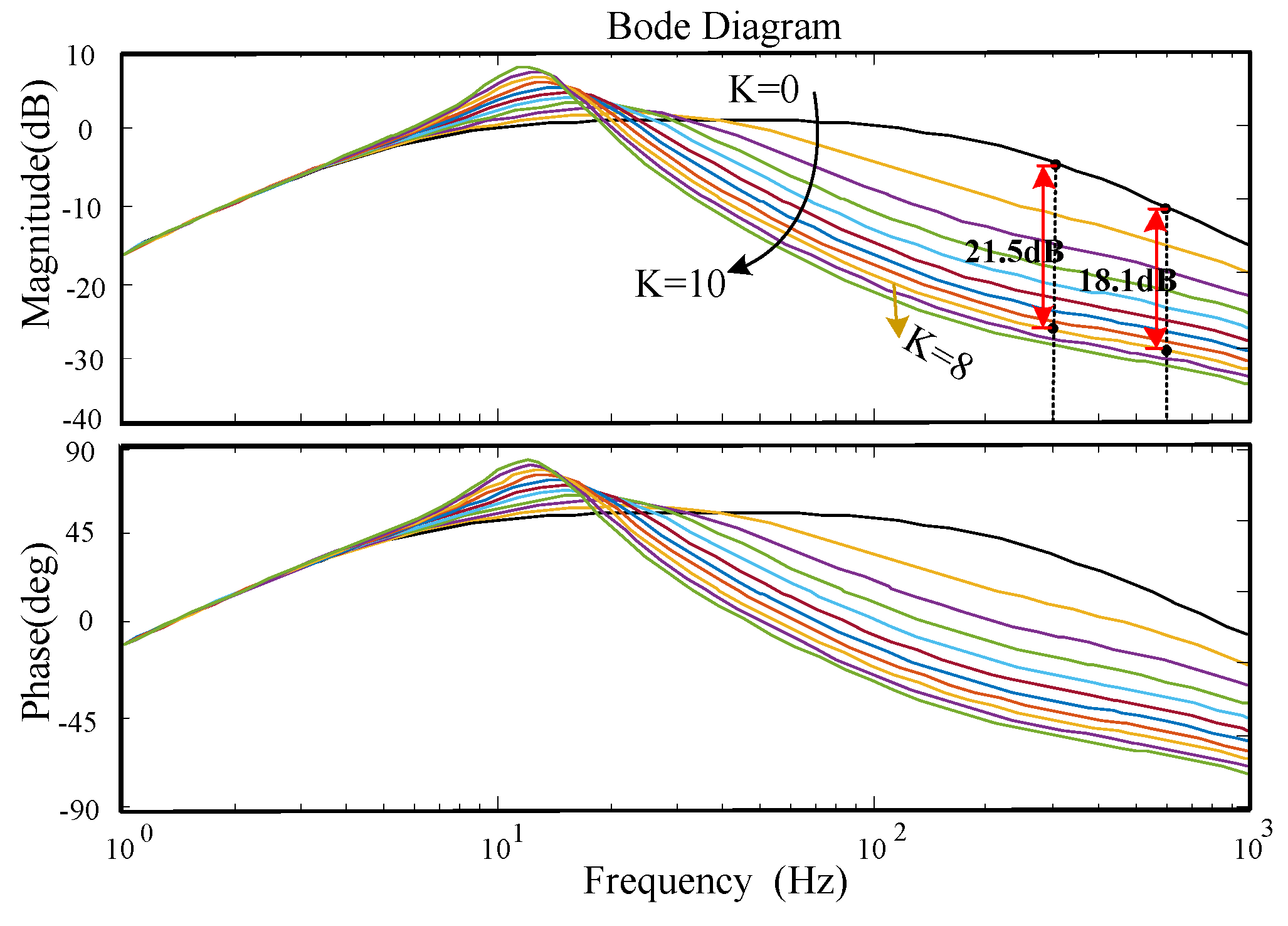
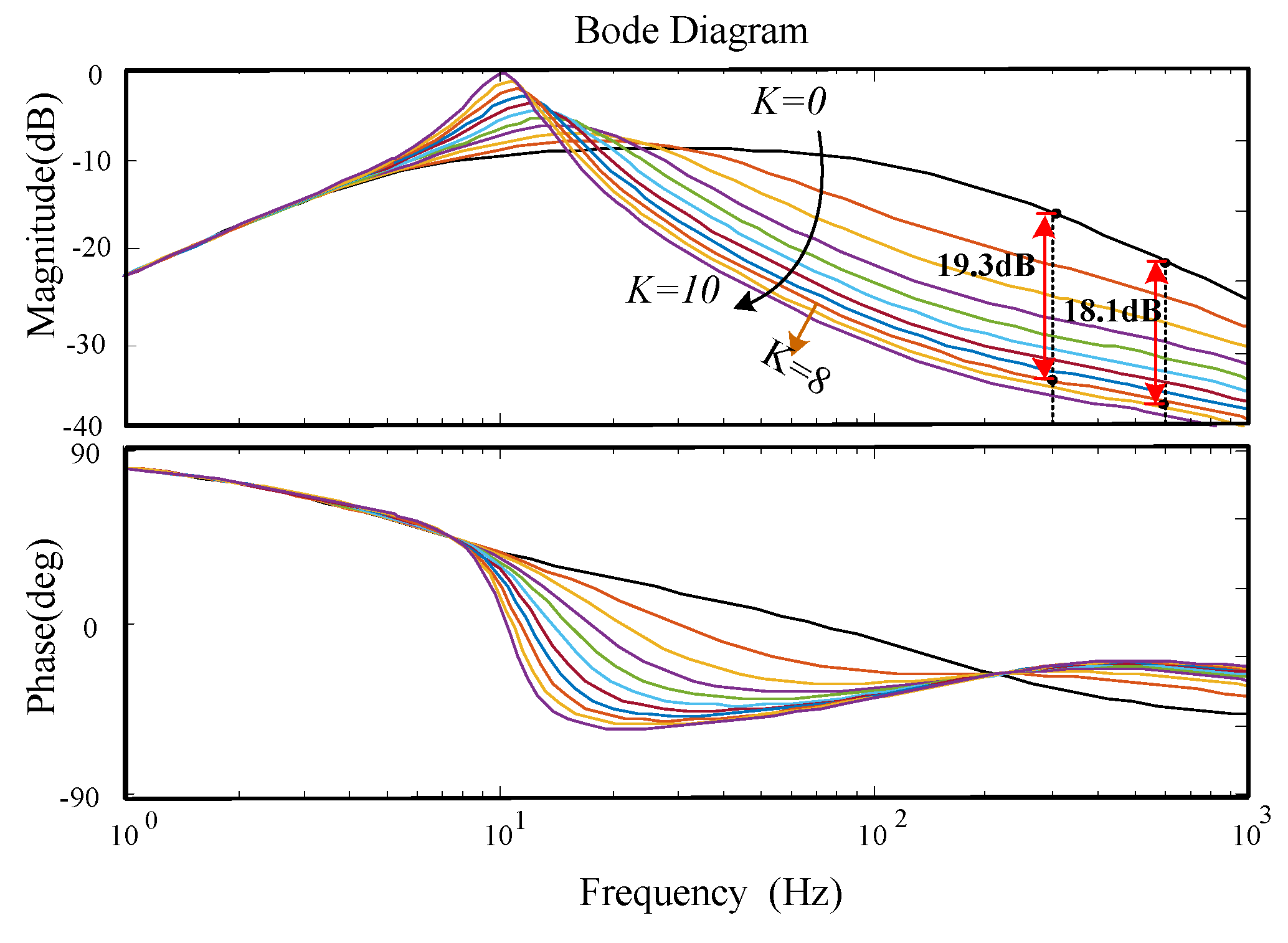
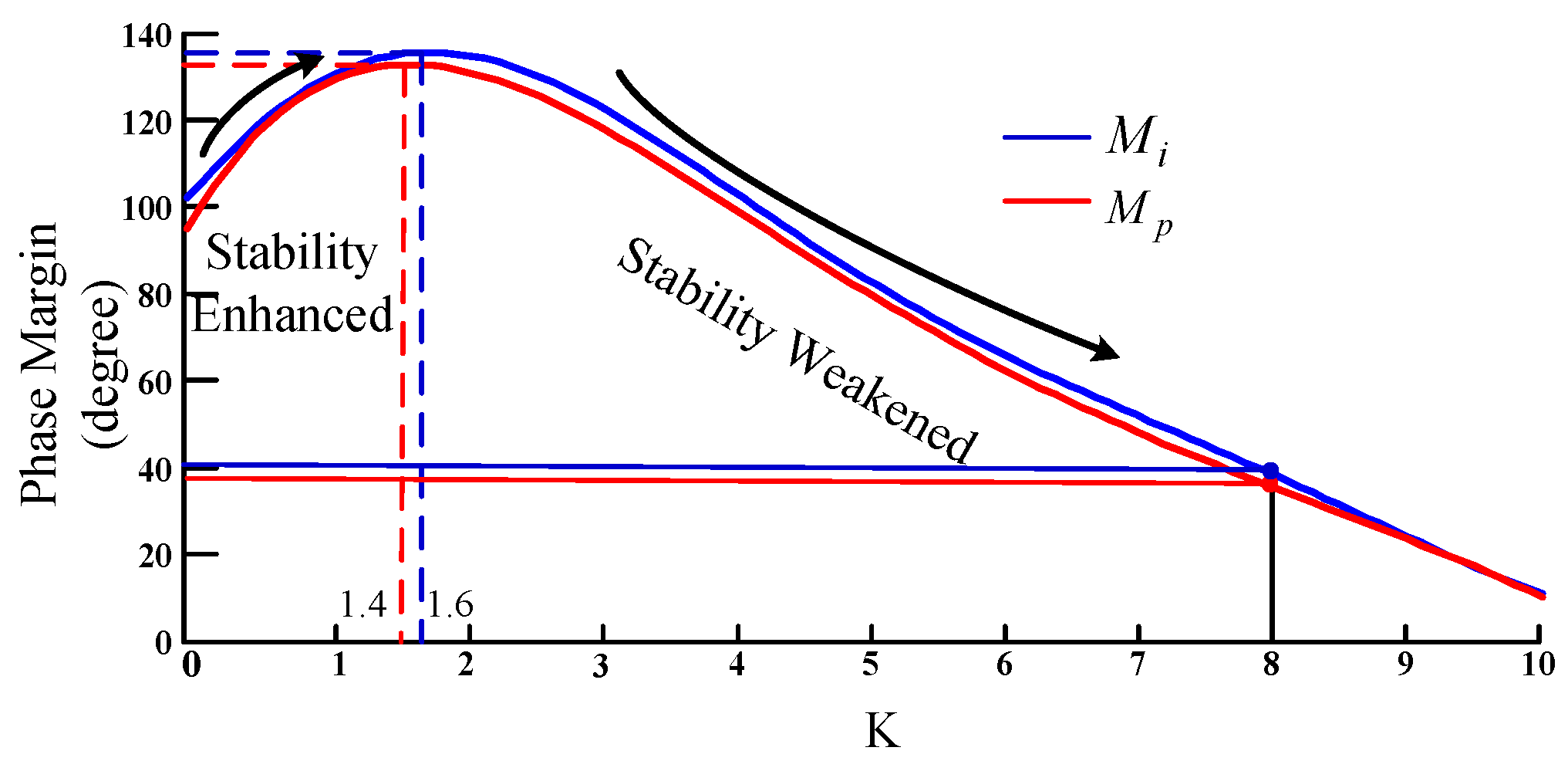

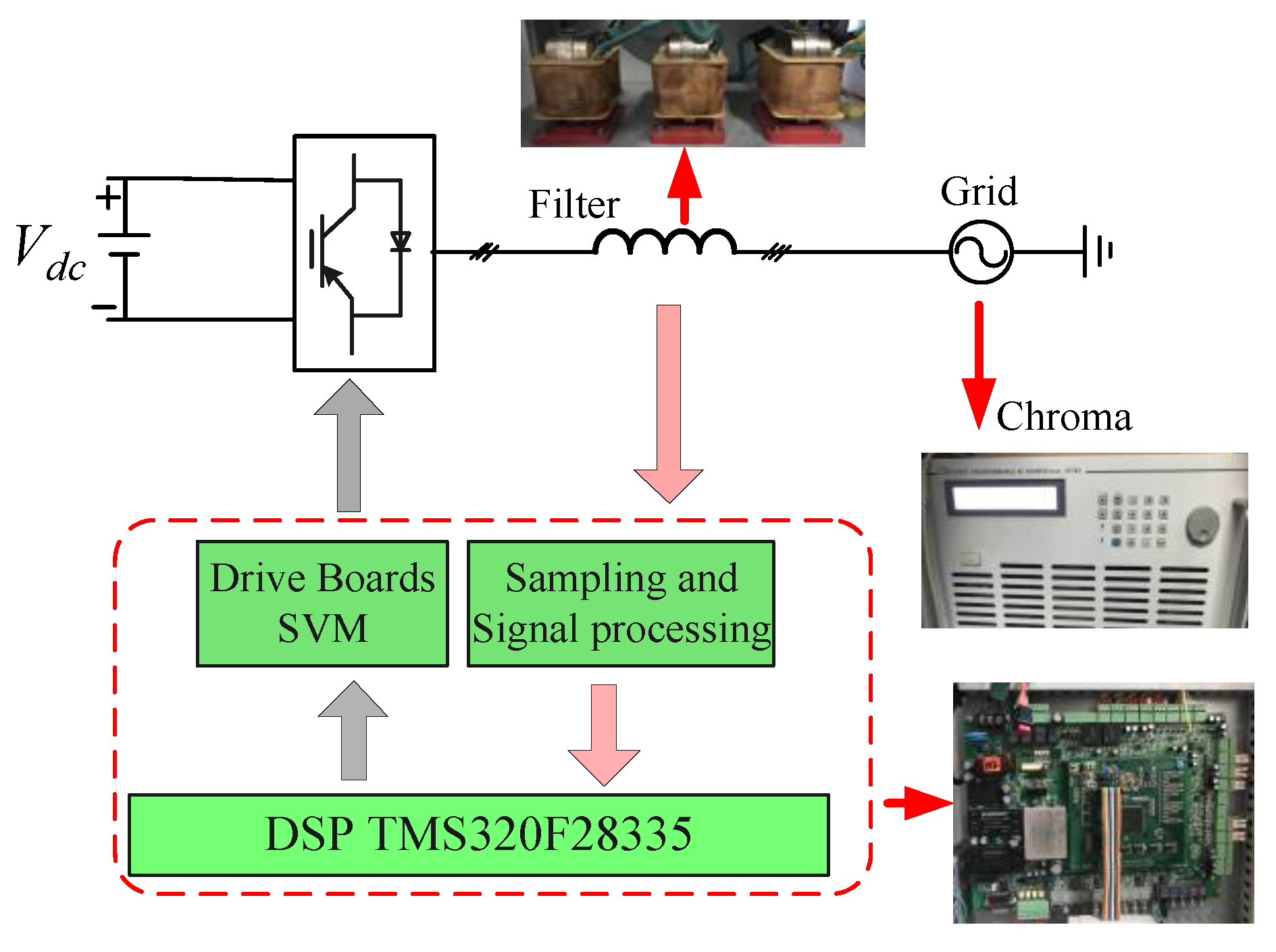
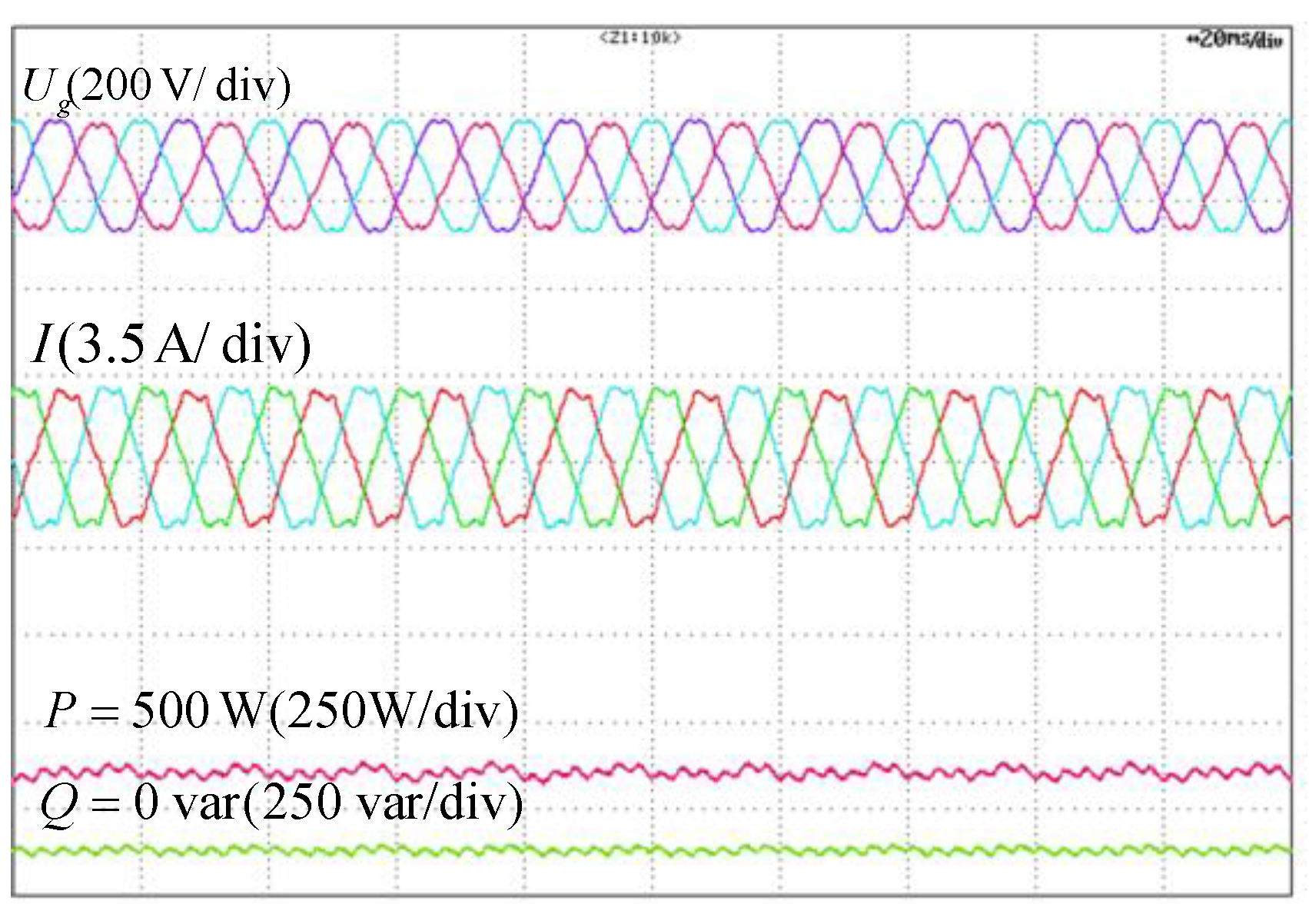
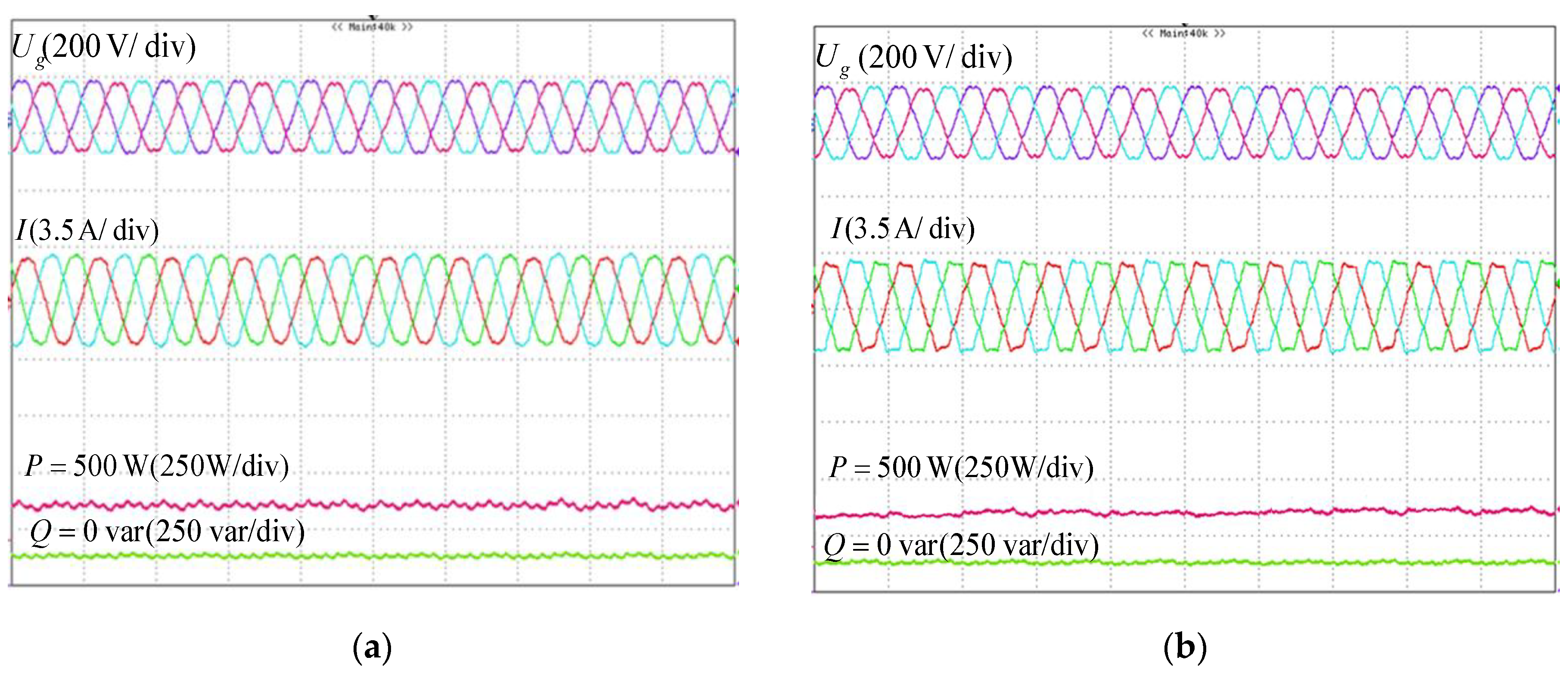

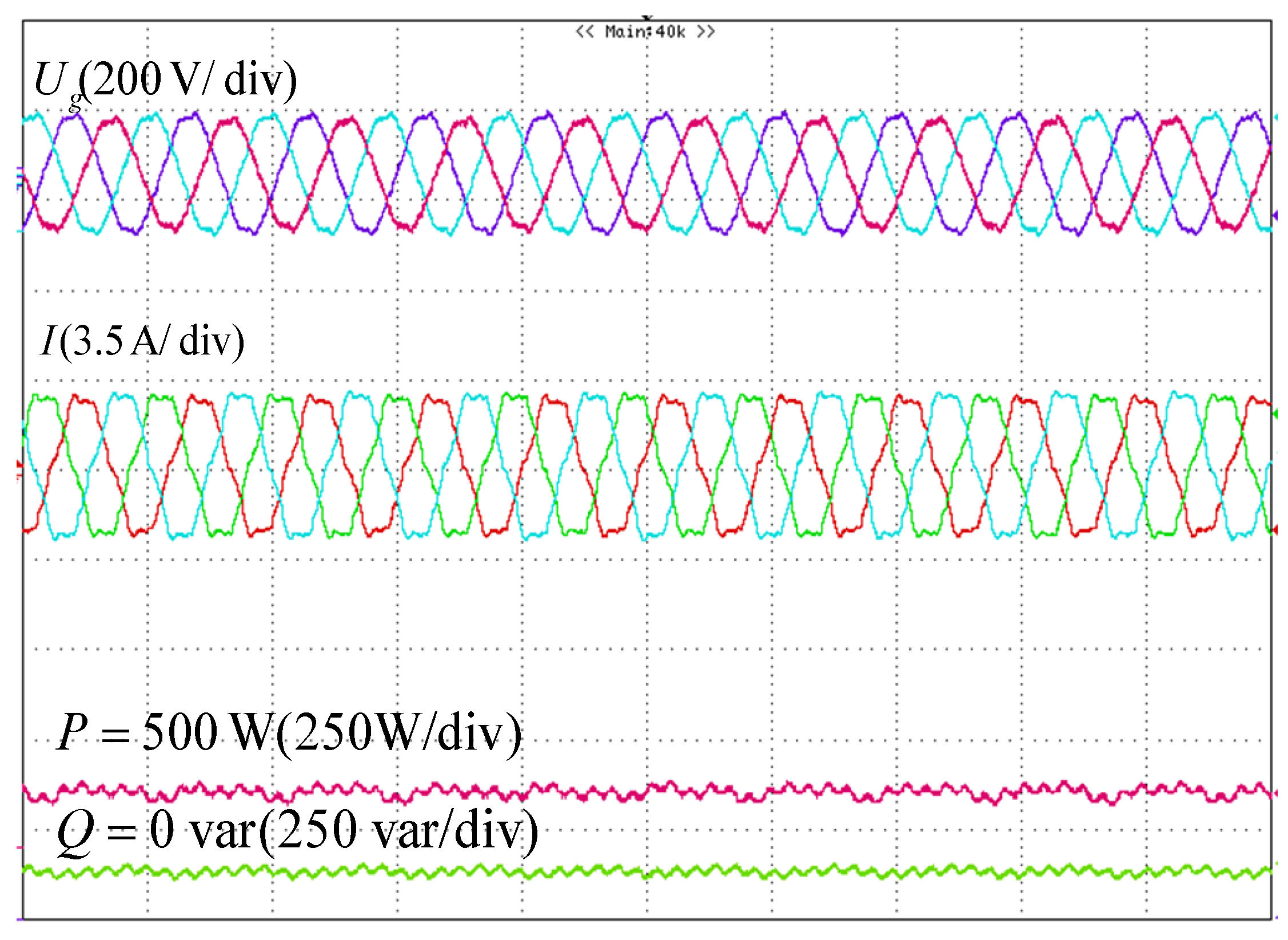


| Distortion | Target | THD of I | Ripples of P | Ripples of Q |
|---|---|---|---|---|
| Integer Harmonics | None | 7.55% | 19.5 W | 16.8 Var |
| TA | 1.82% | 14.3 W | 12.6 Var | |
| TB | 6.59% | 5.7 W | 5.2 Var | |
| Inter-Harmonics | None | 7.18% | 21.4 W | 17.5 Var |
| TA | 1.77% | 16.2 W | 10.1 Var | |
| TB | 4.88% | 6.2 W | 6.6 Var |
© 2019 by the authors. Licensee MDPI, Basel, Switzerland. This article is an open access article distributed under the terms and conditions of the Creative Commons Attribution (CC BY) license (http://creativecommons.org/licenses/by/4.0/).
Share and Cite
Pang, B.; Nian, H. Improved Operation Strategy with Alternative Control Targets for Voltage Source Converter under Harmonically Distorted Grid Considering Inter-Harmonics. Energies 2019, 12, 1236. https://doi.org/10.3390/en12071236
Pang B, Nian H. Improved Operation Strategy with Alternative Control Targets for Voltage Source Converter under Harmonically Distorted Grid Considering Inter-Harmonics. Energies. 2019; 12(7):1236. https://doi.org/10.3390/en12071236
Chicago/Turabian StylePang, Bo, and Heng Nian. 2019. "Improved Operation Strategy with Alternative Control Targets for Voltage Source Converter under Harmonically Distorted Grid Considering Inter-Harmonics" Energies 12, no. 7: 1236. https://doi.org/10.3390/en12071236
APA StylePang, B., & Nian, H. (2019). Improved Operation Strategy with Alternative Control Targets for Voltage Source Converter under Harmonically Distorted Grid Considering Inter-Harmonics. Energies, 12(7), 1236. https://doi.org/10.3390/en12071236






